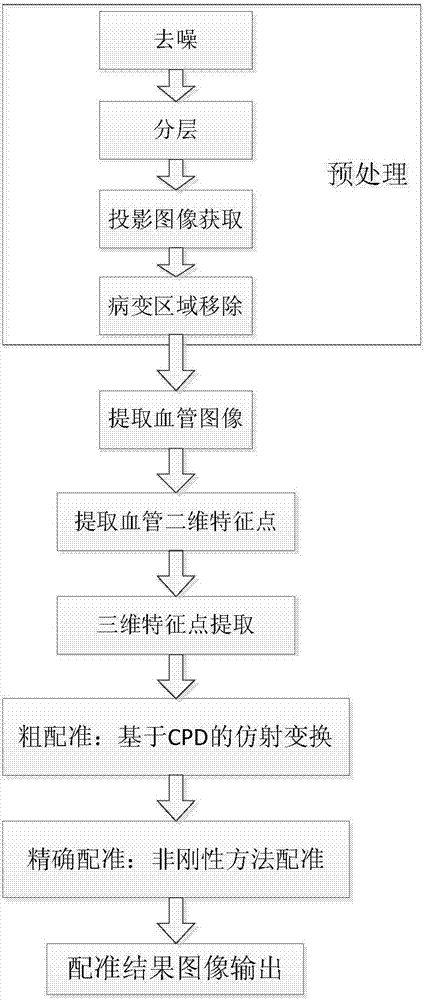Registration method of three-dimensional non-rigid optical coherence tomographic image
A technology of optical coherence tomography and scanning images, which is applied in image data processing, graphics and image conversion, instruments, etc., can solve problems such as algorithm failure and registration result deformation, achieve high effectiveness, improve registration effectiveness, and improve data quality. reliability effect
- Summary
- Abstract
- Description
- Claims
- Application Information
AI Technical Summary
Problems solved by technology
Method used
Image
Examples
Embodiment
[0040] Each step will be described in detail below.
[0041] S1, image preprocessing
[0042] Image preprocessing mainly includes the following four steps: OCT denoising, image layering, projection image acquisition, and lesion removal.
[0043] S11, OCT image denoising:
[0044] The 3D images obtained by the OCT eye imager contain a lot of speckle noise. In order to ensure the effect of subsequent segmentation, it is necessary to effectively remove the noise while retaining the edge information in the image as much as possible. The present invention adopts the curve anisotropic diffusion filtering method to filter the retinal image, which can remove the speckle noise and keep the boundary of the image clearly.
[0045] The curvilinear anisotropic diffusion filtering method is an existing algorithm, such as the curvilinear anisotropic diffusion filtering method proposed by Sun Zhuli et al. where the curvilinear diffusion equation is:
[0046]
[0047] Among them, f is the...
PUM
 Login to View More
Login to View More Abstract
Description
Claims
Application Information
 Login to View More
Login to View More - R&D
- Intellectual Property
- Life Sciences
- Materials
- Tech Scout
- Unparalleled Data Quality
- Higher Quality Content
- 60% Fewer Hallucinations
Browse by: Latest US Patents, China's latest patents, Technical Efficacy Thesaurus, Application Domain, Technology Topic, Popular Technical Reports.
© 2025 PatSnap. All rights reserved.Legal|Privacy policy|Modern Slavery Act Transparency Statement|Sitemap|About US| Contact US: help@patsnap.com



